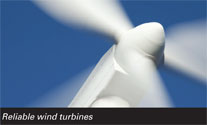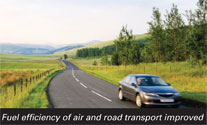Work Packages
Workpackage 1: Selection of Materials
This workpackage will the most appropriate materials for research in the rest of the JRP with the objective of choosing materials where the highest eventual industrial impact and benefit will be generated.
Workpackage 2: Assessment of Wear
This workpackage will develop measurement methods to measure wear. This will include the measurement of the magnitude of wear both ex-situ samples measured before and after wear has taken place to give improved measurement precision and accuracy, and the development of in-situ techniques to give real time information as wear takes place.
Workpackage 3: Friction Measurement
This workpackage will improve the traceability and reproducibility of friction measurement. Friction measurement is normally carried out by using load transducers such as strain gauged sensors to measure frictional load, and dividing this load by the normal load applied between the samples to derive a friction coefficient. The friction load measurement is often subject to drift over the long timescales of many hours or days in some experiments, and the normal load (up to a few 10s of Newtons) is often not measured continuously (or is assumed), particularly in the case of dead-weight loaded test systems. Dynamic issues due to the design of the test system also affect the force measurements.
Workpackage 4: Temperature Measurement
This workpackage will develop temperature measurement techniques that can be employed in-situ during tribological tests. Three approaches, involving non-contact and contact temperature measurements, will be evaluated and tested to find the best solution for in-situ measurement.
Workpackage 5: Measurement of Interface Chemistry
This workpackage will develop methods to characterise the chemical changes that have occurred at the overall wear contact (scale of mm). This work is particularly important for materials where their low friction and/or high wear resistance originates from “tribo-chemistry”. These tribologically formed compounds are currently unidentified. Pre-existing knowledge on ultralow or zero wear rates of specific ceramics (such as zirconia and alumina) thin film coatings, base oils, and additives (respecting “bio-no-tox” criteria) will be used to select the test materials and lube samples.
Workpackage 6: On-line Measurement of Wear and Durability
This workpackage is concerned with the synthesis of the work in other workpackages on the development of online measurements of wear, temperature, and friction and their comparison with traditional methods for measurement of wear and friction. It is also concerned with the development of techniques that can be used to measure the degradation in mechanical degradation of the surface (which affects the loading capability) and the durability (affecting lifetime)
Workpackage 7: Creating Impact
This workpackage will disseminate the outputs and collaborate with organisations such as: Eureka; VAMAS; IEA; Professional Institutes and Standardisation Bodies. Special interest groups will be set up with members from various industrial sectors and training courses and workshops will be held to disseminate best practice in tribological measurement methods.
Workpackage 8: Management and Coordination
This workpackage describes the management and coordination of the project
High Impact Metrology for Engineered Surfaces Delivered to European Industry







